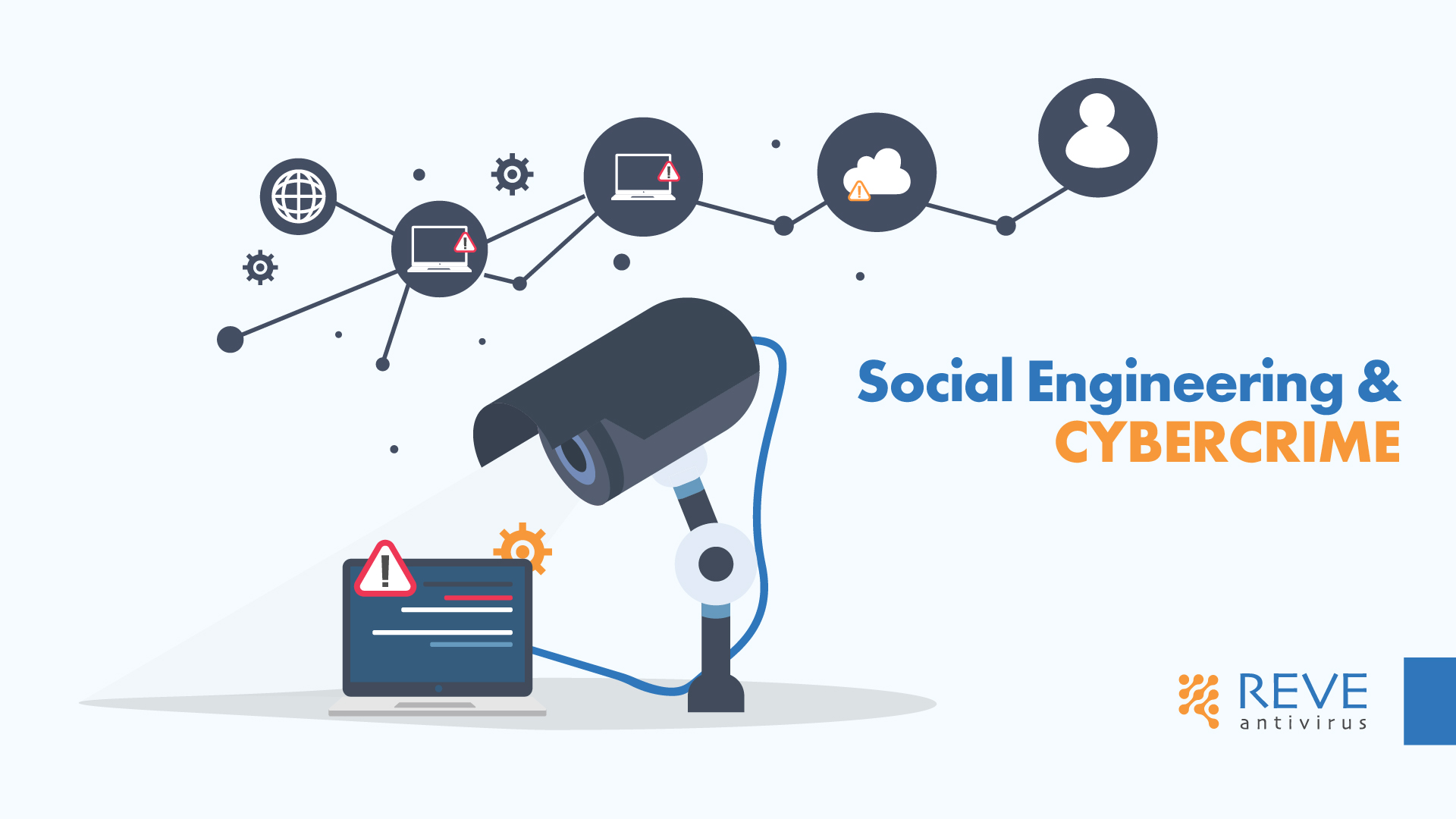
Everyday cybercriminals are finding one newer way or another to commit cybercrime and do harm to the users. Malwares is their weapon of destruction, once it enters the victim’s machine it takes care of the crime. However, to get the initial entry, the perpetrator carries out some tricks (i.e. phishing, baiting, tailgating etc.). All of these methods are often collectively called social engineering. In this article we will discuss more about it.
Social Engineering – Defined.
Social engineering, the term is often used in the context of cybersecurity, where attackers use techniques to gain unauthorized access to computer systems or steal sensitive information.
In general, it refers to the
Use of psychological manipulation and deception to influence individuals or groups of people to divulge confidential information, perform actions or take decisions that are not in their best interest.
Social engineering attacks may happen in different forms, such as phishing emails, pretexting, baiting, or tailgating, and can target anyone from individuals to large corporations. The success of a social engineering attack often relies on exploiting the trust, fear, or lack of knowledge of the victim. It is mostly used by cybercriminals to circumvent security protocols and gain access to confidential information or networks.
Most Common Ways of Social Engineering Attacks
Social engineering attacks often are a collective method of several techniques. Here are some of the most common ways of such attacks:
Phishing: Phishing is a very common name in the world of cybersecurity. It is also the most common type of social engineering attack. Here attackers send fraudulent emails that appear to come from reputable sources (such as banks, social media, or other trusted organizations) to trick victims into clicking on a link or downloading a malicious attachment. Once the attachment is opened, malware makes its way to the computer or the device.
Pretexting: In this type of social engineering attack, the attacker creates a false scenario or pretext to convince victims to reveal sensitive information or perform actions they wouldn’t normally do. This approach requires the attacker to interact with the victim more proactively. The exploit follows once they’ve convinced the victim that they are legitimate.
Baiting: Baiting is a phishing attack in a different form. It involves enticing victims with a reward or incentive to click on a link or download a file, which then infects their computer with malware.
Spear Phishing: Spear phishing is a targeted form of phishing, where attackers create personalized messages to trick specific individuals into divulging sensitive information or clicking on a link.
Tailgating: Tailgating is a physical social engineering attack, where an attacker follows an authorized person into a restricted area, bypassing security protocols. Pretexting can play a role here too.
Impersonation: Impersonation is a type of social engineering attack where the attacker pretends to be someone else, such as an executive or IT support, to gain access to sensitive information or systems.
Watering Hole: In a watering hole attack, attackers target a specific group of people by infecting a popular website or online community they are known to visit with malware.
It’s important to note that these are just a few examples of social engineering attacks, and attackers can use a variety of other tactics to manipulate their victims.
Why Social Engineering is Cyber Criminal’s Favorite

This is mostly because it can be a highly effective way to trick people into giving up sensitive information or taking actions that can compromise their security.
Cybercriminals use social engineering to exploit human psychology and behavior. The actions they take lead the victim to reveal sensitive information, such as passwords or personal data, or click on a link that installs malware on their device.
The social engineering technique is even more popular among cybercriminals because it can be relatively easy to execute when compared to more technically advanced attacks. It requires little or no technical expertise, investment, and completely relies on the attacker’s ability to persuade and manipulate their victims.
Dangers of Social Engineering
The dangers of social engineering are significant and can have serious consequences. They include:
Data breaches: Social engineering attacks can lead to data breaches that result in the theft of sensitive information, such as personal or financial data. This information can be used for identity theft, fraud, or other malicious activities.
Financial loss: Social engineering attacks can trick people into giving away their financial information, such as credit card details or bank account passwords. Cybercriminals can then use this information to steal money from their victims.
Malware infections: Social engineering attacks can also be used to distribute malware, such as viruses, Trojans, or ransomware. Once installed on a victim’s computer, the malware can steal data, damage files, or even take control of the system.
Reputation damage: Social engineering attacks can also damage a person’s or a company’s reputation. For example, if a hacker gains access to a company’s social media account and posts inappropriate content, it could damage the company’s image and cause a loss of trust among customers.
Psychological impact: Social engineering attacks can have a psychological impact on victims. For example, victims may feel violated, embarrassed, or angry after falling for a social engineering attack. They may also experience anxiety or stress as they try to rectify the situation and prevent further damage.
How to Prevent Social Engineering Attacks
Be wary of unsolicited requests: Don’t share sensitive information, no matter who or how asking for it. Information such as usernames, passwords, or financial details, do not share with anyone.
Verify the identity of the person requesting information: Always thoroughly verify the identity of the person requesting information, especially if it’s through an email or phone call. Check their email address or caller ID, and if in doubt, hang up the call or skip the email.
Use strong passwords: Ensure you use strong passwords that are not easily guessable by others. Use a combination of uppercase and lowercase letters, numbers, and special characters.
Regularly update your software: All the famous software regularly push updates and patches to safeguard and provide a smoother experience. Keep your software up to date with the latest security patches and software updates to minimize vulnerabilities.
Be mindful of what you share online: Avoid sharing sensitive information online, such as your full name, address, and date of birth as they could be used to initiate a full scale social engineering attack.
Educate yourself: As social engineering is targeted towards human vulnerability, it’s very important to learn about the different types of social engineering attacks and how to recognize them. This knowledge will help you identify potential attacks and avoid falling victim to them.
Use two-factor authentication: Implement two-factor authentication (2FA) wherever possible. This adds an extra layer of security and makes it harder for attackers to gain access to your accounts.
By taking these measures, you can significantly reduce the risk of falling victim to social engineering attacks.

Social engineering is a highly effective technique for cybercriminals because it targets the weakest link in any security system: human beings. Even with the best security measures in place, it is difficult to protect against a well-executed social engineering attack.
To protect against social engineering attacks, individuals and organizations should be vigilant, educate themselves and their employees about these tactics, and implement security measures such as two-factor authentication and firewalls.
Overall, social engineering attacks can be devastating for individuals and organizations alike. It is important to be aware of the different types of social engineering attacks and take steps to protect yourself and your sensitive information.
- RaaS : The Dark Side of SaaS
- Hackers Target MOVEit Transfer’s Zero-Day Vulnerability, Emergency Patch Deployed
- How Scammers Are Utilizing ChatGPT? Few Tips To Be Safe
- World Backup Day: Why Data Backups are Important in Cybersecurity
- What is Social Engineering and How Cyber Criminals Use It
- Things To Know About Personally Identifiable Information (PII)
- What is Data Breach? Why and How It occurs? How To Prevent Data Breach



